Joyful Flowers with Watercolor Pencils – Watch the Video!
This week, I have a free video where I create these joyful flowers with watercolor pencils. These are inspired by fabric prints and are more motif-like than many of my colored pencil pieces. I love this kind of playing with style.

This is a small piece, just 8 x 8 inches. It’s colored freely with watercolor pencils on thick drawing paper.
Joyful Flowers – Watch the Video!
In the video, I talk about finding inspiration for art-making and tell stories about things that have affected my style. I just read abstract painter Darby Bannard‘s quote:
“Inspiration doesn’t follow style, it creates it.”
It made me want to share my thoughts about inspiration and style. I also wanted to create something colorful and cheerful that is not realistic, but more design-oriented. These joyful flowers were fun to make. After drawing the joyful flowers, I made something small to add to my boxes of joy. You can see that little flowery thing in the video too. Watch the video!
This video is a little longer than I usually post, but I personally like to watch long videos, and maybe you do too?
Joyful Coloring
My newest course Joyful Coloring teaches a color-oriented approach to watercolor pencils.
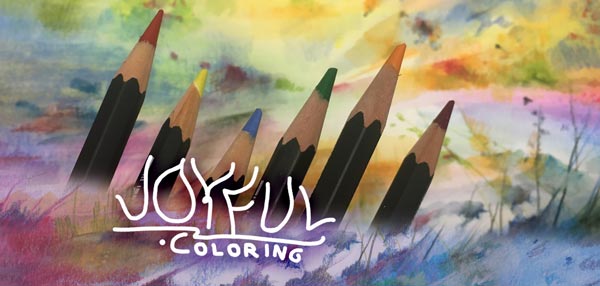
Start with blank paper and create freely with joy and sunshine! >> Buy here!
Art On the Wall – Displaying Canvas Paintings
Our home is full of art. Almost all my canvas paintings are displayed on the walls. The arrangements change when old ones are sold and new ones are born. In this blog post, I show some of the paintings and how they are displayed at the moment.
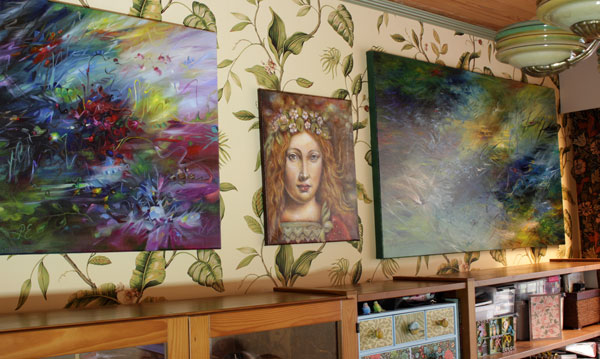
When using stretched canvases, framing is not necessary. I hope this inspires you to create some canvas art. Check out my acrylic painting course Floral Freedom and see more of my paintings at paivieerola.com/gallery!
In the Gallery Corner
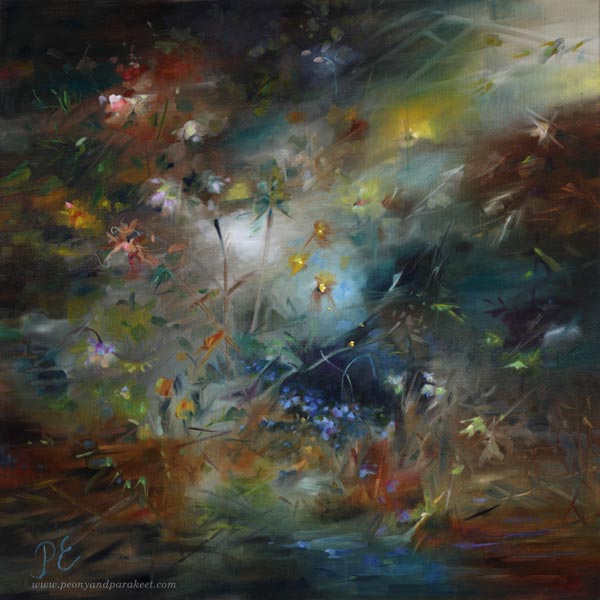
Our library room is on the darker side of our house, but I think that the lack of daylight and a heavy atmosphere goes well with the books and nostalgic-style paintings.
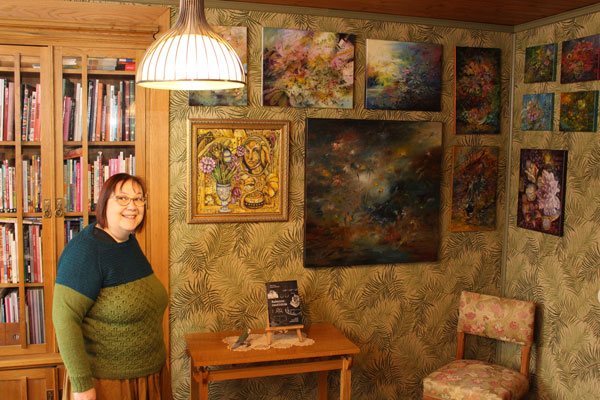
Displaying different sizes of canvas paintings on the same wall looks great but needs planning. I made a plan in Photoshop first, and then we hung them all at once.
Above the Aquarium
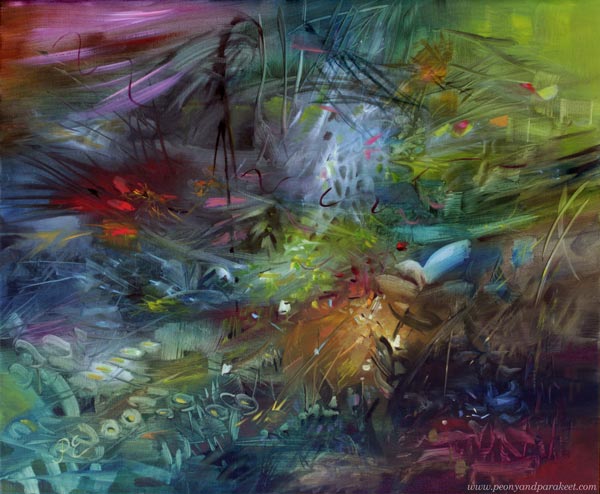
People often say that all my canvas paintings express the underwater world. That hasn’t been intentional because I am actually afraid of deep waters. But my husband has had aquariums for decades, and they must have affected my art.
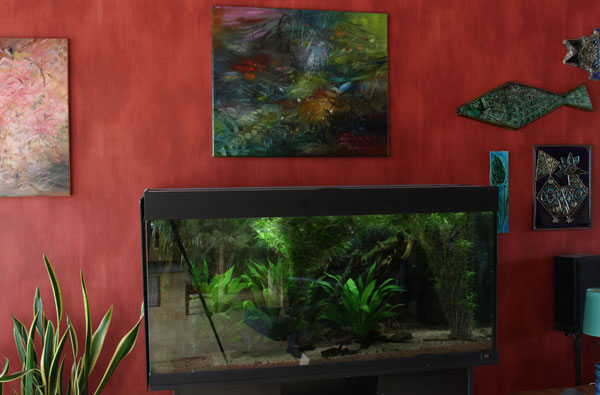
The painting continues the aquarium view. And it was not planned at all!
Best Lit
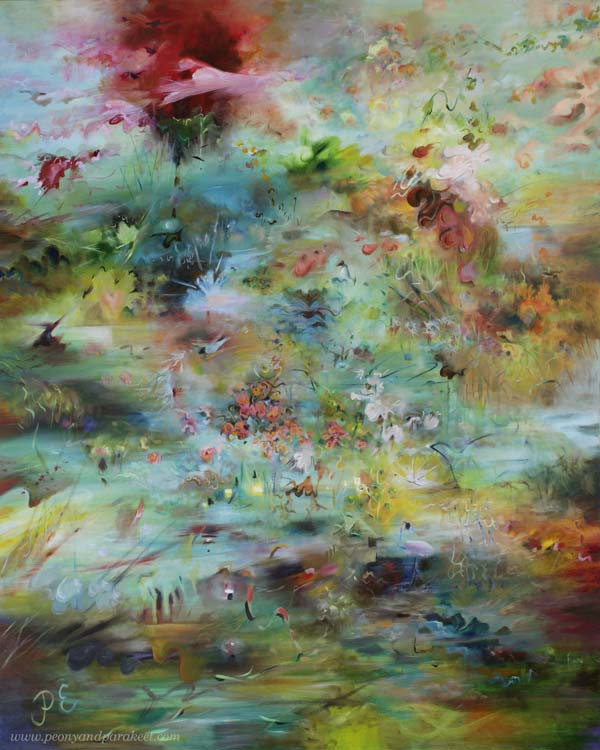
Our dining area has special lighting for a big painting – LED strips in two directions that have adjustable color and intensity.
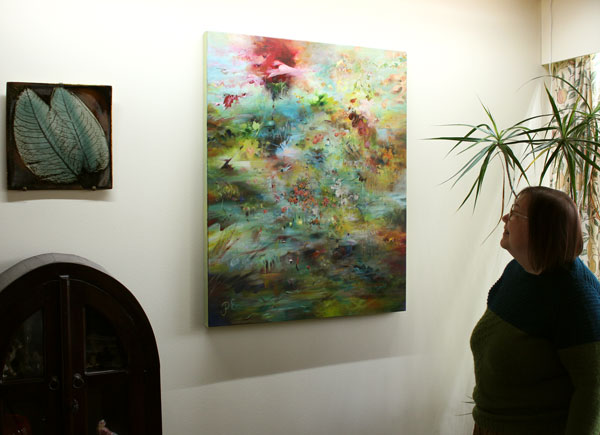
The colors of any painting are highly affected by the amount and color of light.
When I Wake Up
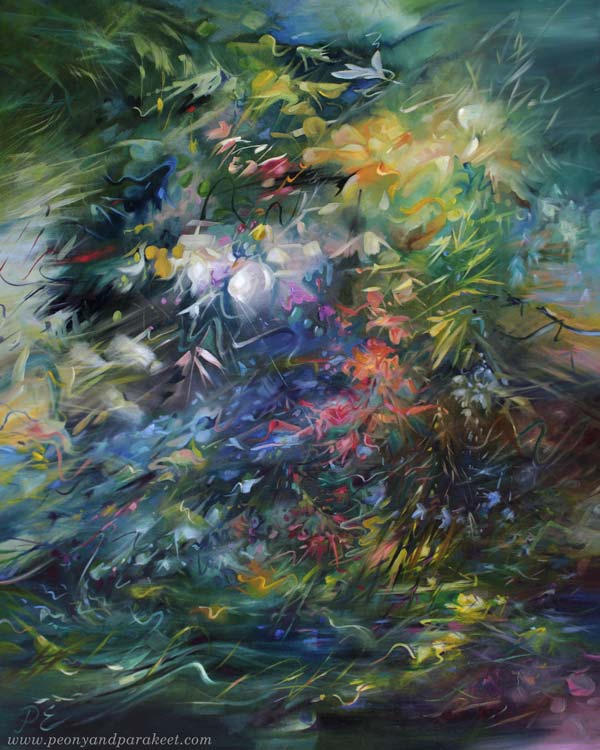
The bedroom is our darkest room, but every morning when I wake up, I look at the wall that is filled with my paintings.
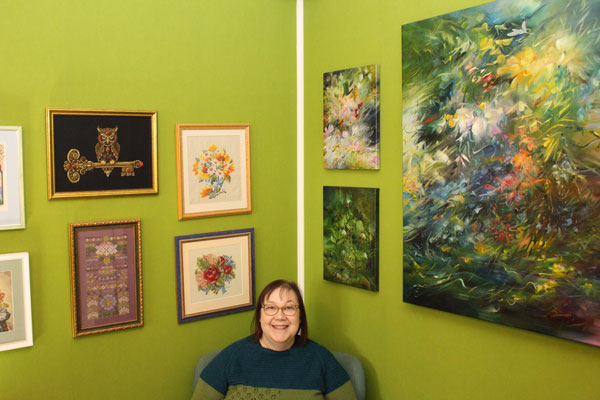
There is also a collection of my cross-stitch projects. Stitching is just a hobby but I like the combination.
In the Hallway Gallery
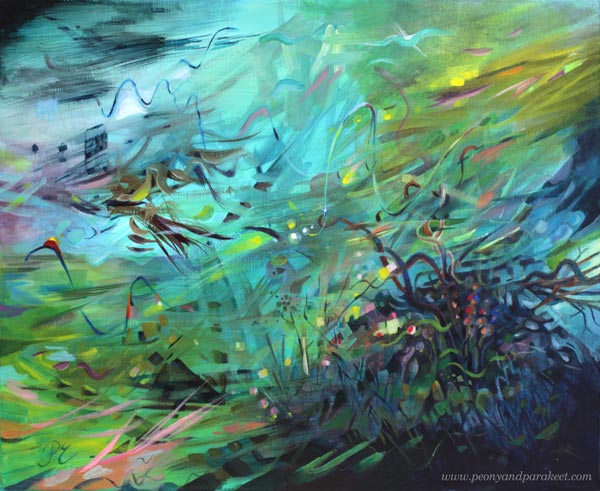
I love our yellow hallway and how the color unifies a mixed collection of paintings. Displaying canvas paintings can be this easy!
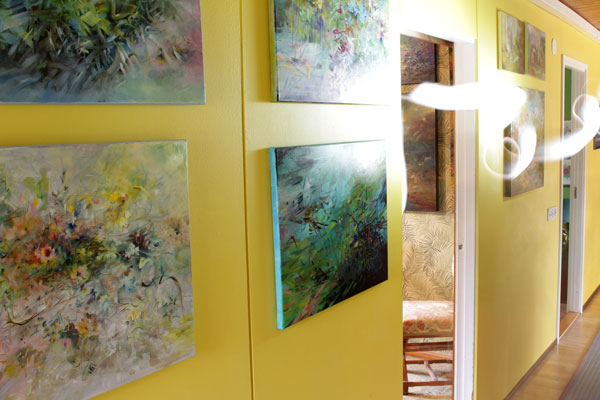
This narrow hallway was super boring before we painted it and added art on the walls.
Entrance Art
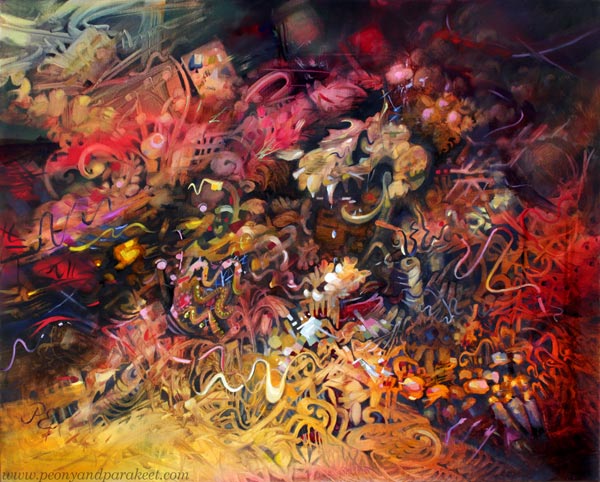
Our house has a space right after the entrance where I often change a painting to one that feels current. I also decorate the top of the sideboard cabinet that’s under the painting. Now it’s time for some darker art.
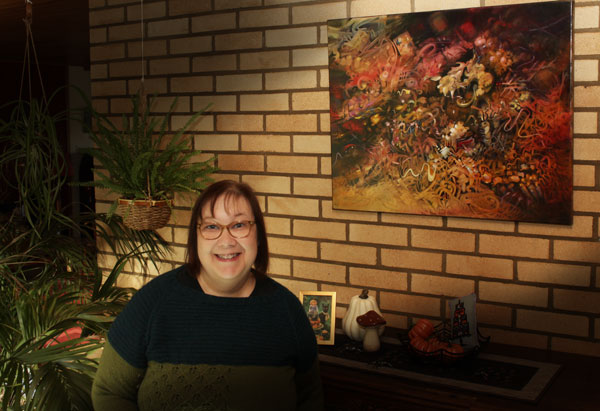
Happy Halloween!
How Your Personal Story is Related to Your Art
This week, I share how my newest painting was born. At the same time, I talk about how the artist’s personal story affects the outcome.
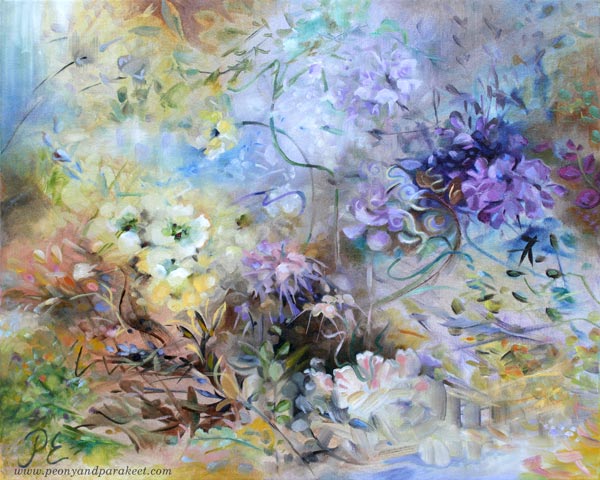
My paintings usually reflect the current season. But now, when there’s a fall in Finland, something springy appeared on my canvas. I call this one “The Spring of Dreams.”
Observing a Flower – Engineer’s and Romantic’s Approaches
Last spring was beautiful. The apple and cherry trees were blossoming.
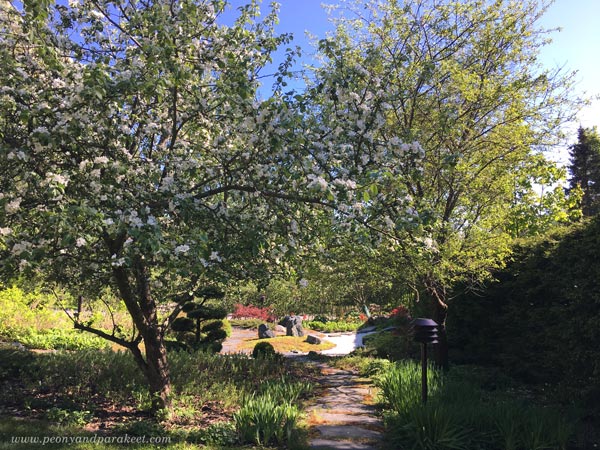
And with the early summer came wonderful irises.
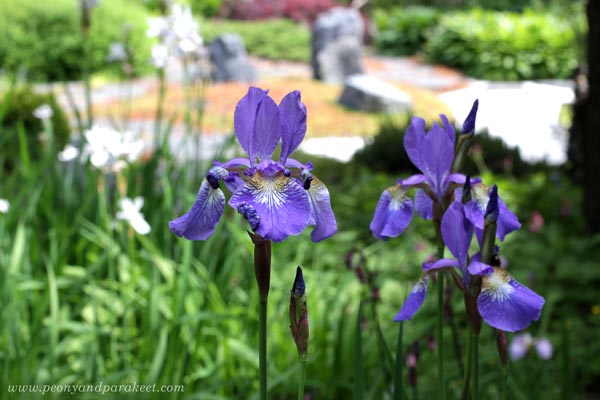
I often take photos in the garden and examine the plants. As a former engineer, I try to see how they are constructed. Not how the petals are attached and such, but how the light constructs the flower, adding its own brushmark to it. As a romantic, I try to see a face of a flower. I look at it like it would be an animal or a human – like it has a name and a history. I am not searching for its eyes but trying to sense its needs and dreams.
This way, I don’t need to copy photos but can paint freely and intuitively. Then when random shapes begin to look like a lighted plant, I try to give it what it wants, even if it’s often a species that doesn’t even exist.
The Fight Between Too Stiff and Too Messy
However, the painting process is not always as straightforward as it sounds. Often the engineer adds something stiff, and the romantic wipes it off. Then the romantic makes a mess, and the engineer tries to clean it.
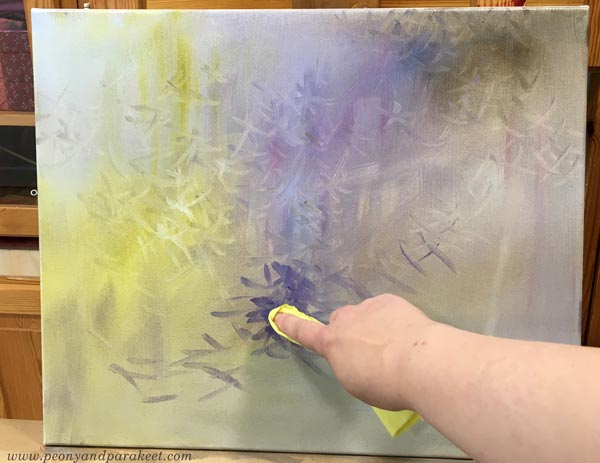
The engineer in me likes to build things with a brush: “There’s a chair, look!”
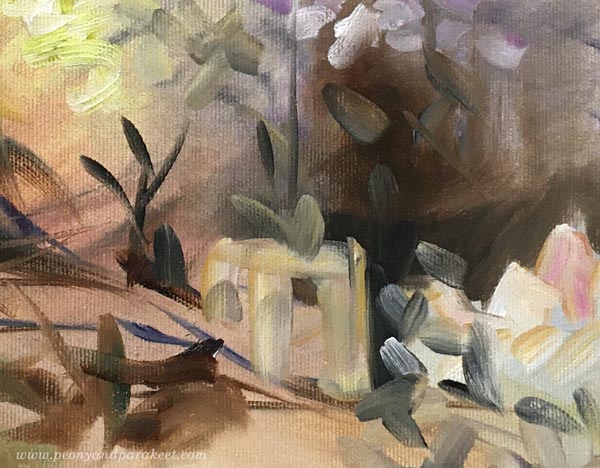
The romantic in me likes leaves and swirls more.
Artistic Direction and Setting Guidelines
To stop the fights, I gave an artistic direction that set challenges for both of them: “We will be making a dreamy floral that has purple. The painting should fit a modern, feminine home that has some rustic elements as well.” Both the engineer and the romantic understand had a common understanding of style when picturing a space where the painting should fit. When I use this method, I choose a location in my home or a picture in an interior design book, or a photo found on Instagram.
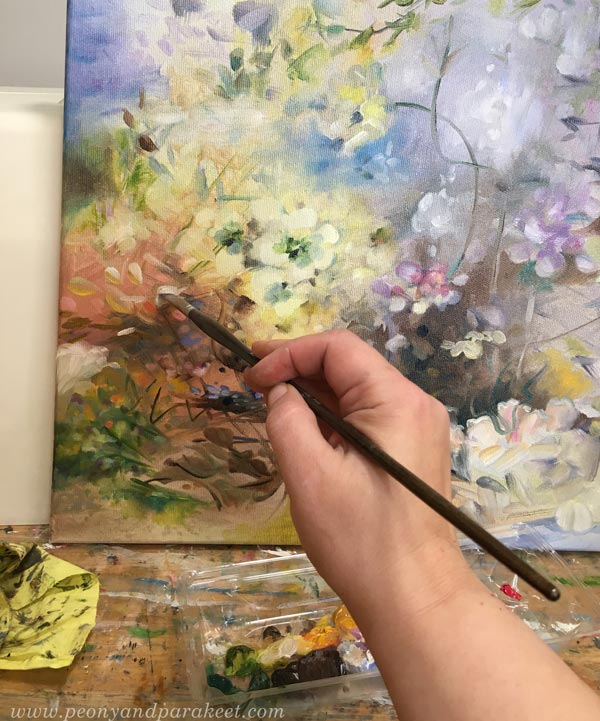
When I was studying industrial design, these kinds of simple and concrete guidelines were called design drivers. Design drivers are different from design principles. Design principles are general guidelines to make your image more expressive and aesthetic. Design drivers are project-based and loosely define the outcome.
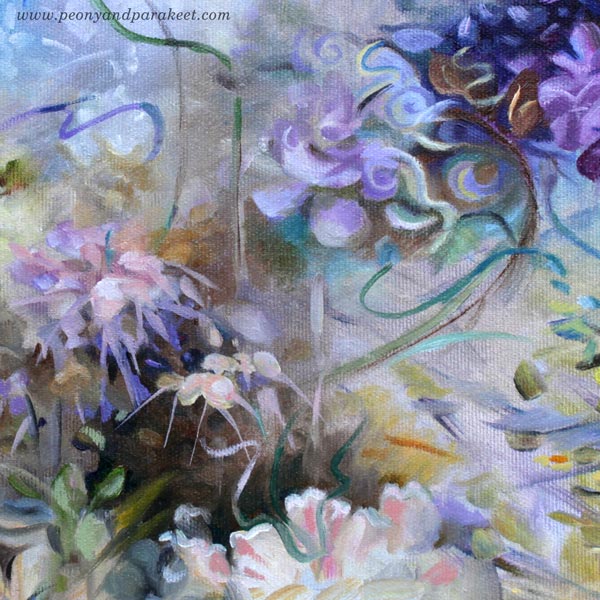
Design drivers prevent me from painting this and that, but I try to make them so general that I can get creative and freely express myself. For example, the requirement to use purple in a painting is not a big limitation.
Personal Story and Art Projects
Behind design drivers, there’s a more general foundation, an artistic vision. My paintings always lean toward the past and have a historical feel. As an artist, I want to combine the past and the present in an uplifting way, creating a fantasy of immortality for the interior space. Because I lost both of my parents at a young age, I never thought I would live old. This way, my artistic vision, and personal story are connected.

I claim that art-making has many layers. It’s not only about the process, techniques, or assignment. The artistic vision and the personal story matter as well. You always have a chance to bring them in, whether you are painting or drawing. For example, if a course sets the starting point, the creative challenge is how to include your artistic vision and story in the projects. This time, rather than listing things you love, go deeper and think about your struggles. How do they define what you want to achieve in art?
Is Your Painting Introvert or Extrovert?
This week, I talk about the personality of paintings. Some are extroverts, some introverts!
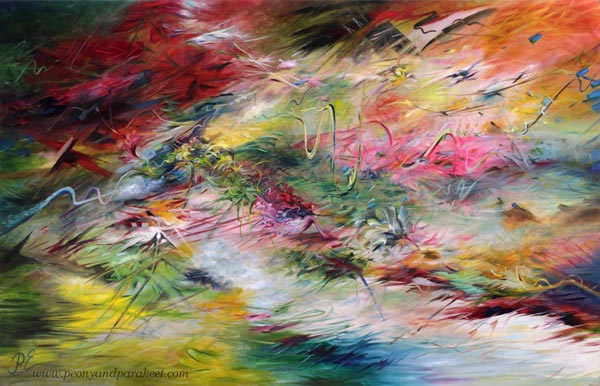
This oil painting, “Kotona Plutossa – At Home in Pluto,” is a part of my series Linnunrata – Milky Way, where I explore planets and outer space. (See previous work: the Earth here, Venus here, and the Sun here!)
Many Inspiration Sources
Earlier this year, I saw a documentary about Pluto, and it felt more familiar than many other planets that I have only read about. In the series, I imagine how the Milky Way could bloom and only take a small dose of the facts about the Planet.
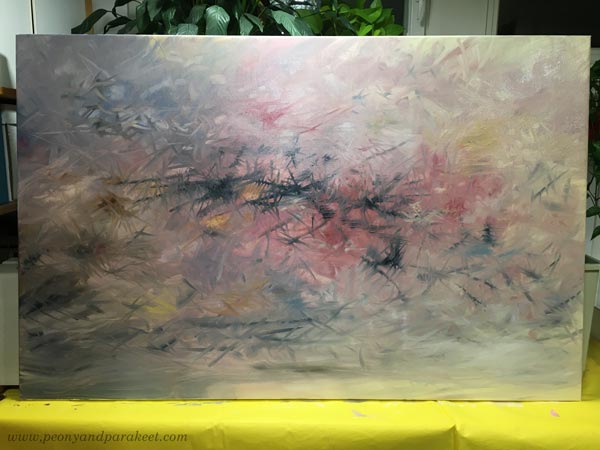
Pluto’s ice volcanoes started the painting, but then I brought in more ideas. The central idea for this painting was home decor. I love mid-century modern houses and furniture, and many of the shapes have a similar feel.
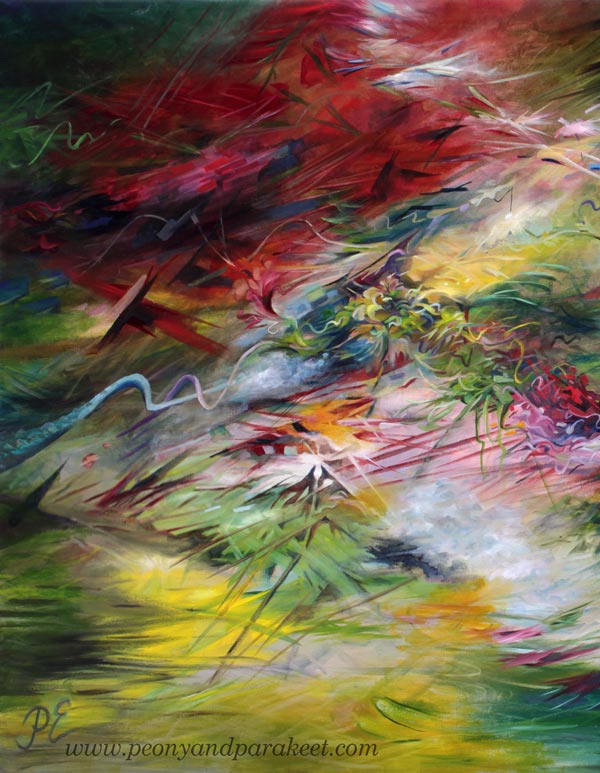
Tricia Guild’s fabrics were another inspiration source. I have been her fan for decades and don’t even have to look at her photos to know what kind of florals she would like to bring to the painting.
Introvert or Extrovert? – Changing the Approach
Even if Pluto is a dwarf planet, this is my biggest painting so far. My style is detailed, and there’s a lot of space in 90 x 140 cm (about 35,5 x 55 inches). There were moments when I felt very unsure about how to proceed because when I asked the painting, it stayed quiet. “Can you hear me, Pluto?” I whispered several times. No response.
This painting clearly was an introvert. I felt like I wanted to quit.
I recognize this syndrome – what I call Big Picture Syndrome – by its signs:
- You feel the need to look at the piece only from the big picture perspective, as a quick stroke here and another there would magically make everything work. In truth, you don’t yet have a clue what the carrying theme for the piece is, and should discover it by making the details more inspiring.
- You feel negative about your potential as an artist but try to convince yourself that the piece is good enough. That someone will like it. And at the same time, you know it’s only an excuse for quitting. The truth is that some pieces are harder than others. Some paintings are extroverts that begin to speak to you right away. And some are introverts that need more time to open up. No need to blame yourself for that. Just keep working and trying to figure out what the piece wants!
“Can you hear me, Pluto?” I asked after bringing in new ideas and adjusting colors and shapes. I was relieved when she answered shyly “Pluto hears.” And when I finished the painting, it felt like coming home.
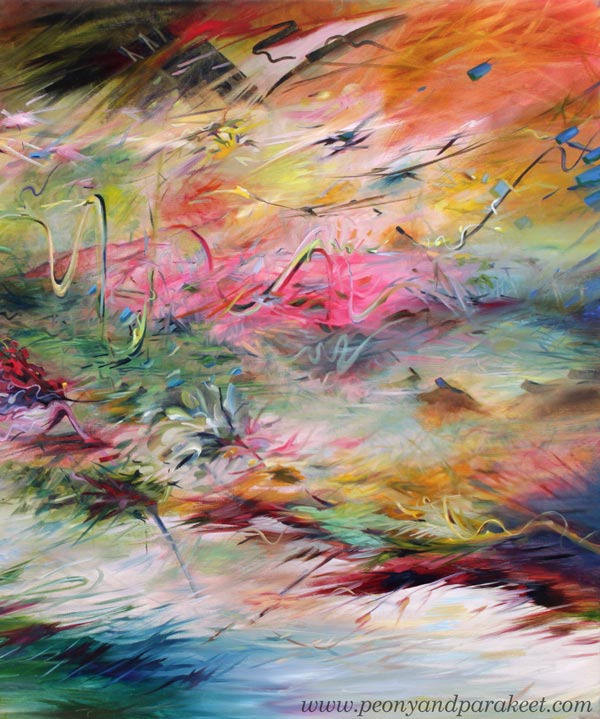
Listening to an introvert painting is always helpful for learning new things about yourself. I became more aware of how much textiles and fabrics inspire me and I want to show that more later too. If you only accept extrovert art, moving forward is more difficult.
Childhood of an Introvert
Another thing that came to my mind was this small crayon piece from about 40 years ago. ( Read more about this one here!)
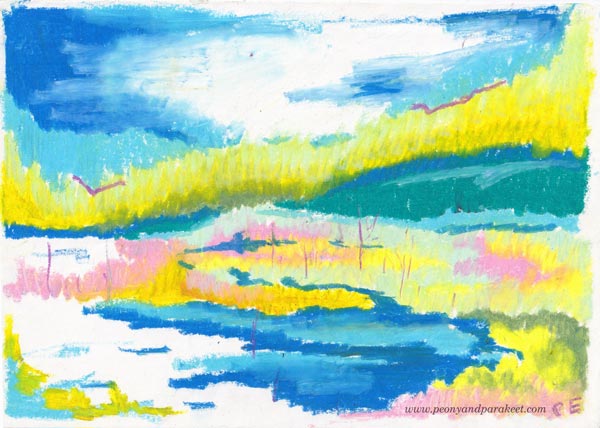
When I put it here, I am astonished at how similar these two pieces look. No wonder she was so shy, there are a lot of years between us!
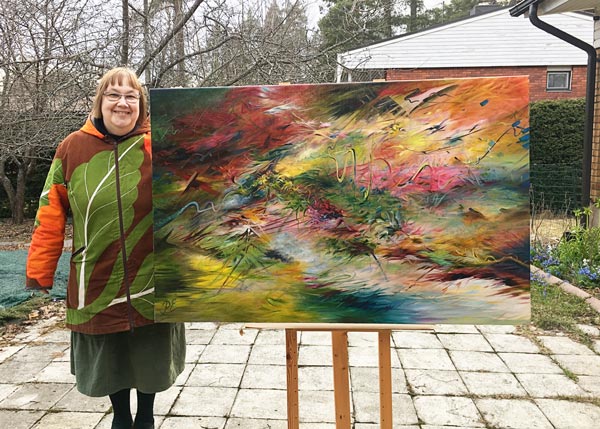
Everything has changed, and nothing has changed over the years, isn’t that so? Introvert or extrovert – try it!
Preparing For the Solo Show
My first solo show Linnunrata will be in June, and it’s keeping me super busy! I still have a couple of paintings that are not finished, and there are lots of edges to paint, hanging wires to attach, and varnishing to do. My current plan is to show 18 paintings, and every single one still has something that I need to do before the show. And there are posters to design, marketing to do, a lot of work!
Linnunrata will be at Gallery K, Tikkurila, Vantaa in June 3-19, 2022.